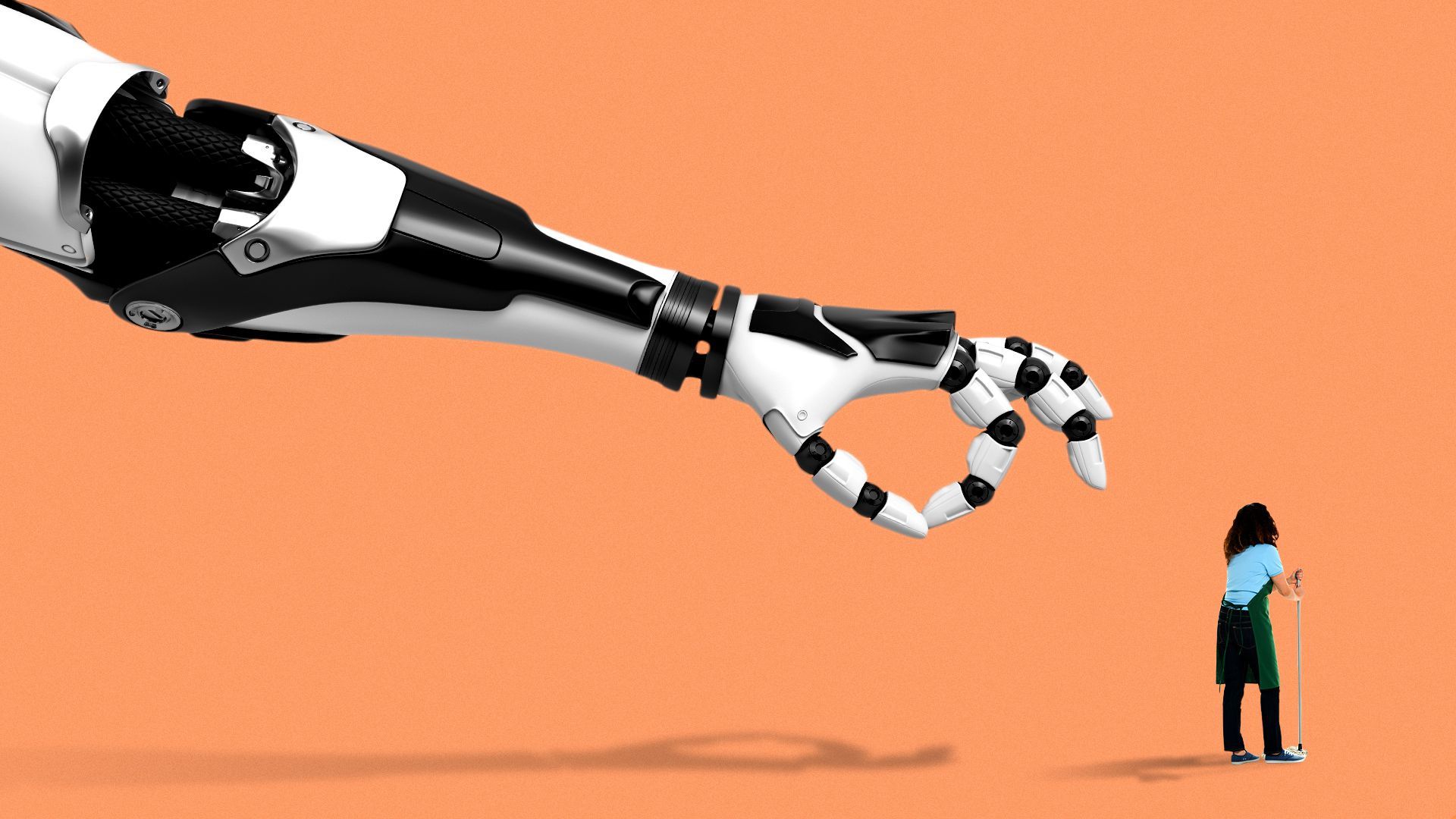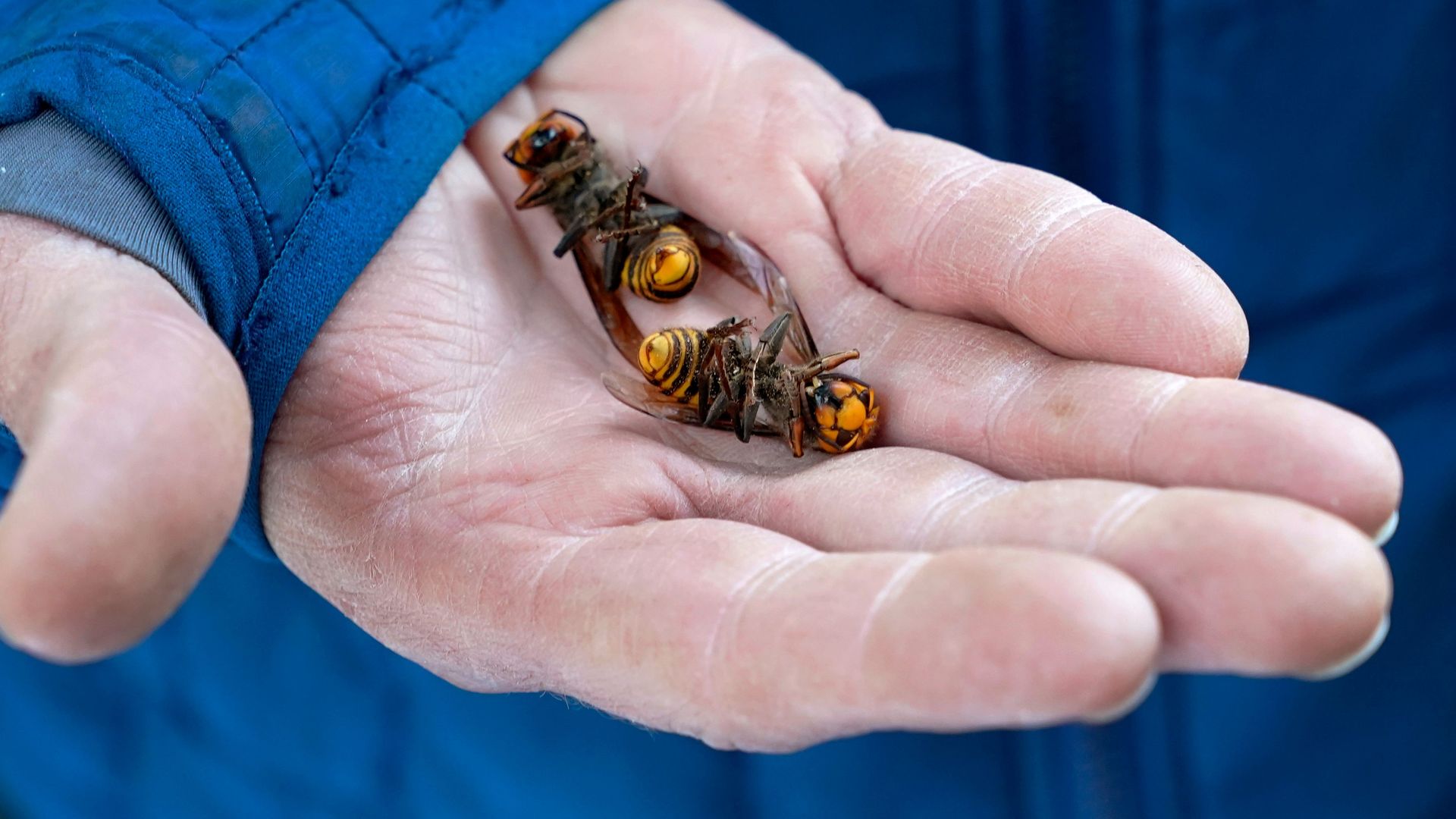| | | | | | | Presented By General Motors | | | | Axios What's Next | | By Bryan Walsh, Erica Pandey and Joann Muller ·Jun 17, 2021 | | Today we're bringing you the extended food delivery boom, the low, low cost of maintaining your electric vehicle and, unfortunately, murder hornets. "What was next" trivia: On this day in 1944, what island country was formally established? Hint: 🌋 - Credit to reader Valarie McCall for being the first to note Valentina Tereshkova of Russia was the first woman in space, 20 years before American Sally Ride.
- Send your answer, along with tips and feedback, to whatsnext@axios.com.
Today's Smart Brevity count: 1,294 words ... 5 minutes. | | | | | | 1 big thing: The ravenous economy around delivering your dinner |  When the pandemic shut down indoor dining and kept people at home for more than a year, food delivery apps like UberEats, DoorDash and GrubHub boomed. Now with COVID-19 curbed in the U.S., those companies are hoping that growth is more than a bubble, Erica Pandey writes. Why it matters: The app surge has reallocated a vast amount of money and jobs to the delivery economy. If food delivery continues to grow, that means restaurants will have to keep forking cash over to the platforms and gig work will become even more common. "The apps are definitely going to hold onto some of the gains," says Daniel McCarthy, a business professor at Emory University who has studied delivery apps. "The question is how much." - Economists were projecting a deceleration in food delivery app growth in 2020. Instead, they grew by 122%, per McCarthy's research.
Between the lines: Analysts thought the delivery app market was fairly saturated before the pandemic, but companies picked up scores of new users as the lockdown pushed people from new demographics — such as suburban residents and older people — to download food delivery apps. - Existing users also started placing larger and more frequent orders because many of them were quarantining and therefore ordering dinner for the whole family, DoorDash chief financial officer Prabir Adarkar tells Axios.
- Total monthly food sales across the app steadily increased and reached nearly $60 million in December 2020, McCarthy found.
- Hiring has also boomed — delivery driving job postings increased 43% between February 2020 and June 2021, according to data from the jobs site Indeed provided to Axios.
Details: Lots of the workers taking those jobs are people laid off from other service jobs at restaurants and in retail at the beginning of the pandemic. - Sarah Dygert was working as a server in Columbus, Ohio, but went to DoorDash full time after her restaurant shut down. "I actually really did miss the serving aspect," she says. "Working DoorDash, you're pretty much on your own."
- Still, Dygert liked the perks of being able to set her own hours and made good money. She ended up getting her boyfriend and other family members to sign up to work for the platform too.
- Now she's got a new remote desk job, but Dygert says she still picks up some DoorDash hours here and there for extra cash.
What's next: McCarthy's research shows that the apps' rapid adoption of new users has dramatically slowed. - At the same time, restaurant traffic is roaring back to higher levels than before the pandemic. The number of reservations was 46% higher in April 2021 than April 2019, per Yelp data.
But, but, but: The apps are attempting to hold onto their pandemic-era glory with new offerings that wade into broader e-commerce. - Many are adding verticals through which customers can get alcohol, groceries or toiletries delivered, betting they can own last-mile delivery and take on the Amazon behemoth.
Share this story. |     | | | | | | 2. How automation led to stagnant wages and inequality |  | | | Illustration: Aïda Amer/Axios | | | | Automation technology has been the primary driver in U.S. income inequality over the past 40 years, according to a new paper by two prominent economists in the field, writes Bryan Walsh. Why it matters: Offshoring, the decline of unions and corporate concentration have all played a part in widening the gap between lower-skilled and higher-skilled workers, but automation is the single most significant factor, and it will likely grow even more important in the years ahead. By the numbers: The real wages of low-education workers have declined significantly over the past four decades, with the real earnings of men who lack a high school degree now 15% lower than they were in 1980. The big picture: In their paper, MIT's Daron Acemoglu and Boston University's Pascual Restrepo calculate that 50% to 70% of the changes in the U.S. wage structure since 1980 can be accounted for by relative wage declines among workers who specialize in routine tasks in industries hit by rapid automation. - Workers who perform tasks that can be increasingly automated — think manufacturing work done by robots or clerical work performed by software — lose out on labor share.
- They're then forced to compete with other lower-skilled workers for fewer remaining jobs, further bidding down wages.
- Higher-skilled workers have largely escaped this trap not so much because of a rising demand for those skills, but because they perform tasks that can't be — or haven't yet been — automated.
Read the rest. |     | | | | | | 3. The low cost of maintaining an electric vehicle |  Reproduced from Energy.gov; Chart: Axios Visuals Electric cars are still significantly more expensive to purchase than gasoline models, but they're considerably cheaper to maintain, Joann Muller writes. What they're saying: Maintenance costs for a battery-electric vehicle are 6.1 cents per mile, compared to 10.1 cents per mile for a conventional car with an internal combustion engine, according to research from the Department of Energy's Office of Energy Efficiency and Renewable Energy. - That's because an EV doesn't have things like spark plugs, an oil filter or a timing belt — and all the maintenance costs associated with them.
- EVs have fewer moving parts overall, so there's less to break down.
Yes, but: They still have brakes, tires and accessories like headlights and windshield wipers that need to be replaced occasionally. The bottom line: When you factor in savings on gas and maintenance over the life of the car, an EV doesn't cost that much more than a gasoline car. Share this story. |     | | | | | | A message from General Motors | | An EV for everyone | | |  | | | | General Motors is adding 30 new electric vehicles and producing the revolutionary Ultium Platform. The background: This is made possible by a $35 billion investment in EVs and AVs through 2025 to make the all-electric future accessible for everyone. | | | | | | 4. Boardrooms become less white | | 2021 is shaping up to be a big year for diversifying leadership at S&P 500 firms, according to new data from the executive search firm Spencer Stuart provided to Axios, Erica writes. Why it matters: Companies have long pledged to bring professionals from underrepresented groups into top positions — most recently during the racial justice protests after George Floyd's murder while in police custody in 2020 — but have been slow to make changes. - This year, however, change finally appears to be accelerating.
- Per Spencer Stuart, 47% of new independent directors in 2021 are Black, Asian or Latino, up from 22% in 2020.
- 6% of S&P 500 boards self-disclosed having an LGBTQ+ director on their board.
|     | | | | | | 5. What's next: Murder hornets 🐝 |  | | | A Washington State Department of Agriculture worker holds two dead Asian giant hornets in a photo from October 2020. Photo: Elaine Thompson/Pool/AFP via Getty Images | | | | The people of Washington state have an unwanted summer guest, writes Bryan: Asian giant hornets, also known as "murder hornets." Why it matters: The 2-inch-long invasive murder hornets pose a threat to honeybees and native hornet species, and their extremely painful stings can be deadly to human beings. What's happening: According to the AP, entomologists from the state and the USDA confirmed a report of a dead Asian giant hornet in Snohomish County north of Seattle, the first such sighting this year. - The hornets generated media buzz — yes, I know what I did there — last year after nests were discovered along the Canadian border.
Between the lines: Experts believe the dead hornet was likely left over from the previous year, when agriculture officials in the region went tree to tree trying to vacuum up nests. - But DNA tests indicate the hornet was unrelated to earlier populations, and it's not clear how it arrived in Snohomish County.
The bottom line: The USDA advises that if you run into a murder hornet, you should "calmly leave the area" — which is advice I would follow, perhaps minus the "calm" part. |     | | | | | | A message from General Motors | | An EV for everyone | | |  | | | | General Motors is adding 30 new electric vehicles and producing the revolutionary Ultium Platform. The background: This is made possible by a $35 billion investment in EVs and AVs through 2025 to make the all-electric future accessible for everyone. | | | | Thanks for reading! If this email was forwarded to you, subscribe here! |  | | The tool and templates you need for more engaging team updates. | | | | | | Axios thanks our partners for supporting our newsletters. If you're interested in advertising, learn more here.
Sponsorship has no influence on editorial content. Axios, 3100 Clarendon Blvd, Suite 1300, Arlington VA 22201 | | | You received this email because you signed up for newsletters from Axios.
Change your preferences or unsubscribe here. | | | Was this email forwarded to you?
Sign up now to get Axios in your inbox. | | | | Follow Axios on social media:    | | | | | |









No comments:
Post a Comment